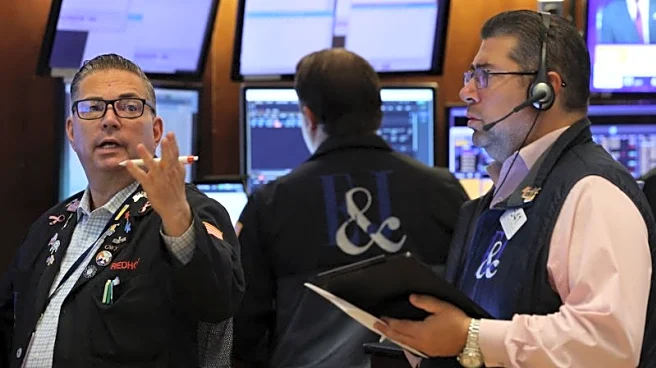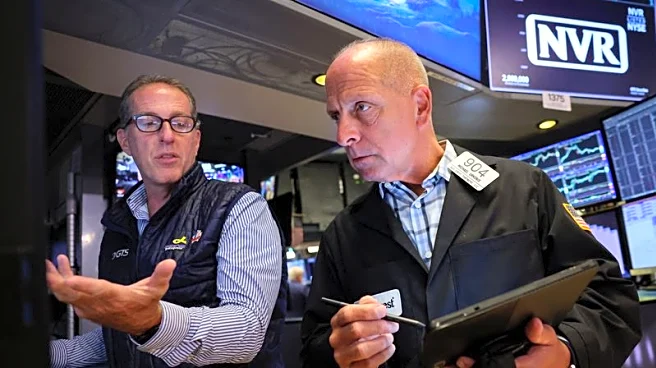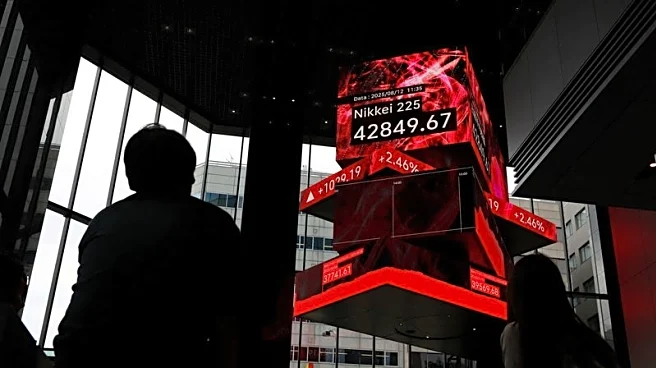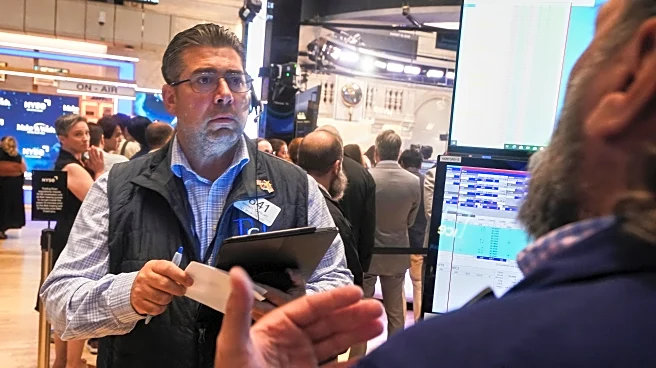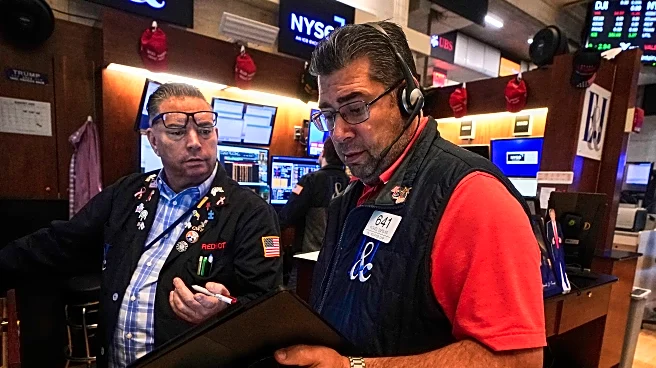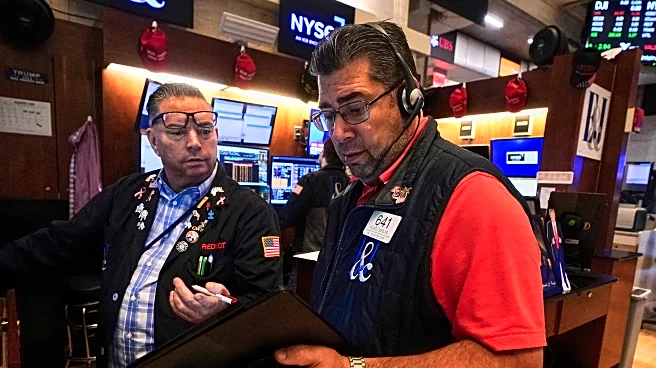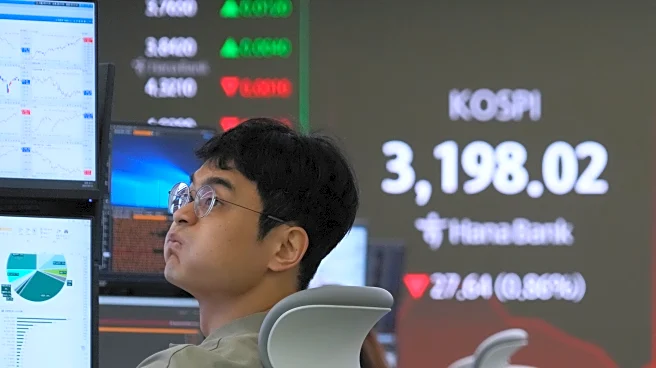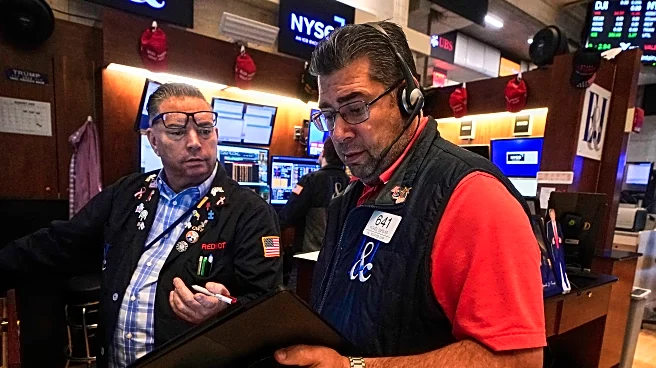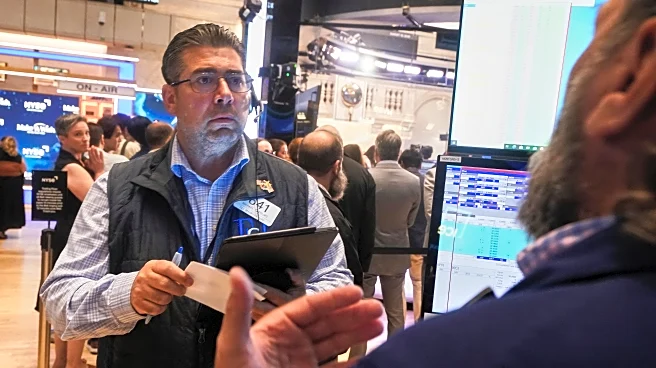By Jamie McGeever
ORLANDO, Florida (Reuters) -TRADING DAY
Making sense of the forces driving global markets
By Jamie McGeever, Markets Columnist
Wall Street slumped on Tuesday, dragged down by weakness in some of the big tech companies that have led the charge to new highs this year, as investors hunker down ahead of a keynote speech by Fed Chair Jerome Powell later this week.
More on that below. In my column today I look at the cagey dance between Donald Trump and Wall Street - the market knows it has
the power to rein in some of the president's policy excesses, but isn't wielding it. Not yet, anyway.
If you have more time to read, here are a few articles I recommend to help you make sense of what happened in markets today.
1. Trump says Putin may not want to make a deal on Ukraine 2. Switzerland ready to host Putin for any Geneva peacetalks, minister says 3. S&P affirms 'AA+' credit rating for US, cites impact oftariff 4. Trump's interest rate demands put 'fiscal dominance' inmarket spotlight 5. AI will replace most humans, but then what?Today's Key Market Moves
* STOCKS: Wall Street in the red, with the Nasdaq leadingthe way, down 1.5%. The Dow ekes out a new high of 45,207 pointsbefore easing. Europe gains, Asia and EM in the red. * SHARES/SECTORS: Intel up 7% after Softbank takes $2 blnstake. Nvidia -3.5%, its biggest fall in four months, pushingthe tech sector down nearly 2%. * FX: Canadian dollar falls 0.5% to 1.3855/$ on softinflation data. Brazil's real down 1.2% to 5.50/$, another downday and its biggest fall in six weeks. * BONDS: Treasury yields ease from recent highs, down 4bps at the long end to flatten the curve. UK 30-year yield hitsnew 27-year high, but ends the day lower too. * COMMODITIES: Oil falls again, WTI crude futures down1.7% to lowest close since June 2 at $62.35/bbl.Today's Talking Points:
* Peace in our time? Investors digested the extraordinary summit between U.S. President Donald Trump, Ukraine President Volodymyr Zelenskiy, and a phalanx of European leaders in the White House on Monday. Did it move the dial much on the prospects of a Russia-Ukraine ceasefire, or a deal to end the war?
Optimism around Trump's promise of security guarantees for Ukraine in the future buoyed European markets on Tuesday. But that evaporated as the U.S. session rolled on, as Trump told Fox News he thinks Russian President Vladimir Putin may not want to make a deal after all.
There may be no immediate direct impact on major equity, bond, or currency markets from the conflict. But prolonged war on Europe's doorstep, fractured ties between the US and Europe, and a fickle relationship between Trump and Putin can't be good in the long term.
* Retail therapy. Some of America's biggest retailers report second-quarter earnings this week, shining a light on the health of the U.S. consumer and, by extension, the economy at large. Home Depot reported on Tuesday; Lowe's, Target, and TJX release results on Wednesday; and Walmart is out on Thursday.
There are conflicting signals coming from the U.S. consumer. By some measures, household consumption flat-lined in the first half of the year, but other indicators show consumer spending is the biggest contributor to GDP growth. The rich are spending, but the bottom 50% are struggling.
The S&P 500's consumer discretionary sector is flat this year, and the consumer staples index is up 6%. Both are lagging the broader index, which is up 8%, and the IT and communications sectors, which are both up around 13%.
* Interest rate decisions. The central banks of New Zealand, Indonesia, and China announce their latest policy decisions on Wednesday. Two of the three are expected to stand pat, and one is expected to cut borrowing costs.
The People's Bank of China is expected to keep benchmark one- and five-year lending rates unchanged for the third straight month at 3.5% and 5.5%, respectively. Although the economy needs more support, the central bank may want to explore structural policies aimed at specific sectors rather than broad-based monetary easing. For now.
This has helped propel a recovery in the yuan, which was plumbing 17-year lows at the depths of the "Liberation Day" tariff turmoil in April. Since then, the PBOC has only lowered borrowing costs once, by 10 basis points, and has fixed the yuan higher in 16 of the last 19 weeks.
Markets, Trump in delicate policy dance
U.S. President Donald Trump has faced little opposition in his drive to rip up the global economic rulebook, whether from his fellow Republicans, political opponents, or institutional guardrails. The only exception has been "the market."
But now even investors are holding their fire, enabling more risk to build up in the financial system.
Wall Street's reaction to Trump's "Liberation Day" tariffs on April 2 was so ferocious that the president did something he had rarely done: he backed down.
Trillions of dollars were wiped off the value of U.S. stocks amid a 10% nosedive from April 3-4. The only two-day selloffs since the 1930s that were bigger occurred during the Second World War, "Black Monday" in 1987, the Global Financial Crisis in 2008, and the pandemic in 2020.
The stock market bottomed out on April 7 after Trump paused most of his country-specific tariffs. Wall Street has not looked back since, with the S&P 500 rebounding 35% to an all-time high.
This episode suggests that "the market" is one of the few true checks on Trump's apparent pursuit to reshape the U.S. – and indeed the world – economy.
The only problem is that the president has continued to pursue unorthodox policies in recent months - including challenging the independence of the Federal Reserve, firing statisticians, and slapping tariffs on countries for non-economic reasons – and investors have failed to tap the brakes.
FED PUT
The so-called "Trump put" -- the idea that the president won't let the markets fall too far -- is essentially a funhouse mirror version of the famous "Fed put," the long-held belief that, in the event of a crisis, the central bank will step in to restore stability.
Trump seemingly did just that in April, but it was to clean up a mess of his own making. And one could argue that it was actually investors who came to the economy's rescue by putting pressure on the president to reconsider policies considered ill-advised by most economists.
Trump and markets are therefore now in a curious dance.
Investors appear to believe that markets can ultimately stop Trump from pushing the envelope too far on tariffs or other policies. But as a result, investors are not overreacting – or reacting at all – to the latest controversies around the Bureau of Labor Statistics firing, his attacks on Fed Chair Jerome Powell, his pressure on Intel's CEO to resign, or the outsized tariffs slapped on Brazil and India.
This, in turn, has powered the markets to new record highs, emboldening Trump to push the envelope even further.
RISK ON
So even though the market has the power to rein in the president's economic policy excesses, it's not using it. Why hasn't the market pushed back?
As the cliche goes, equity investors are paid to be optimistic. It's in their interest to keep the train hurtling along, provided there aren't any immediate obstacles to derail it.
There are, of course, a few pretty large hurdles on the horizon for the U.S. economy, including the highest tariffs since the 1930s and some of the biggest budget deficits since World War II outside of crisis periods. But until these or other issues present an immediate economic threat, markets can choose to ignore them.
By under-reacting to Trump's unorthodox policies, markets may not only delay the day of reckoning but also amplify the potential impact.
Why? Genuine economic and geopolitical paradigm shifts are under way, and investors are not pricing in the attendant risk. Nobody knows what the ultimate impact of these shifts will be, but we do know that with greater uncertainty comes greater downside risk.
Yet equity volatility is the lowest it has been this year, and even in the bond market – not known for its optimism – volatility is the lowest in three and a half years, while U.S. corporate bond spreads are the tightest since 1998.
Ultimately, the market is unlikely to call Trump's bluff until something truly unexpected or extreme hits. In the meantime, investors can justify this nonchalance by saying that corporate earnings growth is solid, AI enthusiasm is high, economic growth remains decent, unemployment is low, and consumers are still spending.
Wall Street is choosing not to put on the brakes, meaning this train will continue rolling on. Whether it's heading for a collision is an open question.
What could move markets tomorrow?
* New Zealand interest rate decision * Indonesia interest rate decision * China interest rate decision * Japan machinery orders (June) * Japan trade (July) * UK inflation (July) * Germany producer price inflation (July) * Euro zone inflation (July, final) * U.S. Treasury auctions $16 billion of 20-year bonds * U.S. earnings, including retailers TJX Companies, Lowe's,and TargetWant to receive Trading Day in your inbox every weekday morning? Sign up for my newsletter here.
Opinions expressed are those of the author. They do not reflect the views of Reuters News, which, under the Trust Principles, is committed to integrity, independence, and freedom from bias.
(By Jamie McGeever; Editing by Rod Nickel)
